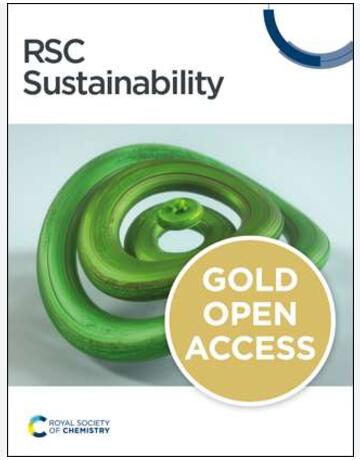Economic Impacts of the Electric Road System Implementation on the Rotterdam–Antwerp Corridor
IF 3.3
3区 环境科学与生态学
Q2 ENVIRONMENTAL SCIENCES
引用次数: 0
Abstract
Electric road systems (ERSs) are a group of technologies that allow powering adequately equipped road transport vehicles with electricity from the road infrastructure while in motorway traffic. They can be categorised into three technology groups: overhead catenary, ground conductive, and ground inductive, depending on the mode of power transfer used. The supplied energy is used for propulsion and for charging the vehicle batteries to be used once the vehicle leaves the electrified road section. Also, another energy source, e.g., diesel, natural gas, or hydrogen, can be used while away from the ERS. This research investigates the potential impacts of implementing the different ERS technologies on the Rotterdam–Antwerp motorway corridor that links the two largest ports in Europe. The aim is to identify which of the routes between the ports is best suited for the implementation of an ERS, whether there are substantial differences in the economic performance of the different ERS technologies, determine what ERS vehicle traffic volumes are required and potentially available for successful implementation, what investment is required to build the system and whether the ERS operator can be profitable, and whether transport operators could operate their trucks on ERS profitability in this corridor setting. The research shows that the route between Rotterdam and Antwerp that runs on motorway E19 is the best to be electrified from an economic standpoint. Our calculations show that the traffic on the Rotterdam–Antwerp corridor is sufficient for economically justifying ERS infrastructure rollout and operation. For transport operators who happen to have specific client bases, e.g., those who usually serve clients from one of the ports along the electrified route, the construction of an ERS on the route could prove to be very lucrative if they adopt the technology early.鹿特丹-安特卫普走廊实施电动道路系统的经济影响
电动道路系统(ERS)是一组技术,可在高速公路交通中利用道路基础设施提供的电力为装备齐全的道路运输车辆供电。根据所使用的电力传输模式,它们可分为三类技术:架空导线、地面传导和地面感应。提供的能量用于车辆的推进和充电,一旦车辆驶离电气化路段即可使用。此外,在离开 ERS 时,还可以使用另一种能源,如柴油、天然气或氢气。本研究调查了在连接欧洲两大港口的鹿特丹-安特卫普高速公路走廊上采用不同的 ERS 技术可能产生的影响。其目的是确定港口之间的哪条路线最适合实施 ERS,不同 ERS 技术的经济性能是否存在实质性差异,确定成功实施 ERS 所需和可能获得的 ERS 车辆流量,建立该系统所需的投资,ERS 运营商是否能够盈利,以及运输运营商是否能够在该走廊环境中通过 ERS 盈利。研究表明,从经济角度来看,鹿特丹和安特卫普之间的 E19 高速公路是最适合电气化的路线。我们的计算显示,鹿特丹-安特卫普走廊的交通量足以从经济角度证明 ERS 基础设施的推广和运营是合理的。对于拥有特定客户群的运输运营商而言,例如那些通常为电气化路线沿线某个港口的客户提供服务的运营商,如果能尽早采用该技术,在该路线上建设 ERS 将会非常有利可图。
本文章由计算机程序翻译,如有差异,请以英文原文为准。
求助全文
约1分钟内获得全文
求助全文
来源期刊

Sustainability
ENVIRONMENTAL SCIENCES-ENVIRONMENTAL SCIENCES
CiteScore
6.80
自引率
20.50%
发文量
14120
审稿时长
17.72 days
期刊介绍:
Sustainability (ISSN 2071-1050) is an international and cross-disciplinary scholarly, open access journal of environmental, cultural, economic and social sustainability of human beings, which provides an advanced forum for studies related to sustainability and sustainable development. It publishes reviews, regular research papers, communications and short notes, and there is no restriction on the length of the papers. Our aim is to encourage scientists to publish their experimental and theoretical research relating to natural sciences, social sciences and humanities in as much detail as possible in order to promote scientific predictions and impact assessments of global change and development. Full experimental and methodical details must be provided so that the results can be reproduced.
 求助内容:
求助内容: 应助结果提醒方式:
应助结果提醒方式:


